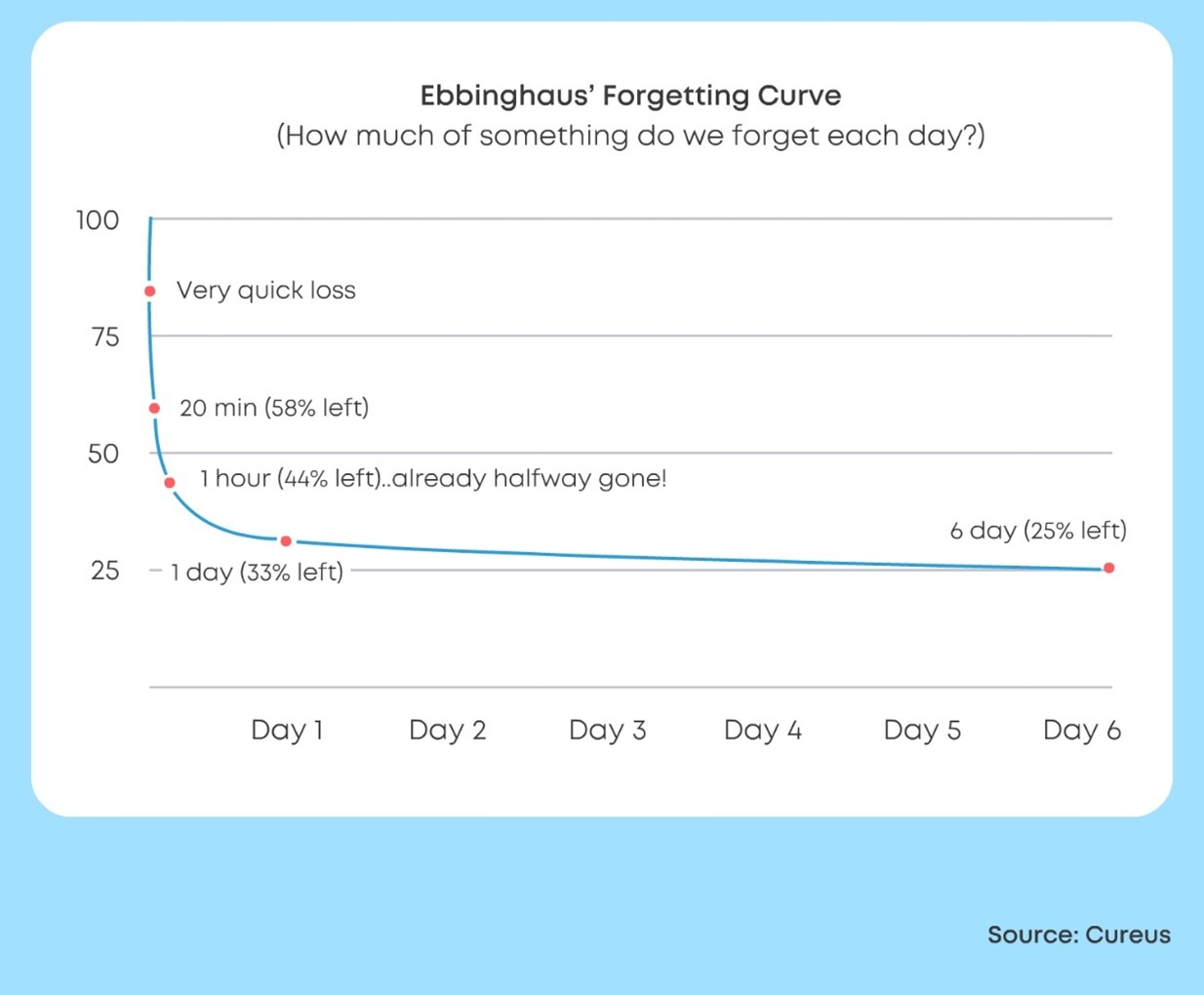Driving engagement is a big hurdle to cross for trainers leading learning programs. Any learning material developed is of no use if it cannot engage the learners and keep them interested throughout the training.
Even if a learner completes a training session, the rates of retention are often low, thus rendering the training ineffective. According to German psychologist Hermann Ebbinghaus’s Forgetting Curve theory, if new information that we learn is not applied, around 75% of it is lost within just six days.

Think about this – approximately $358 billion was spent globally in 2020 on training. But was it worth it? According to a Harvard Business Review study, more than 75% of respondents were dissatisfied with the learning and development programs of the companies they work for. In addition, just 12% of employees apply new skills learned during the training program into their jobs.
What can be done to conduct meaningful training programs that keep employees engaged throughout the learning experience and beyond?
Gamification of learning and training programs has been shown to deliver high engagement and a deeper learning experience as compared to traditional methods. Consider this: according to a study, close to 95% of employees enjoy using gaming-inspired elements at work. The study further said that around 72% of employees feel gamification inspires them to work harder. Let’s look at ways in which gamification helps in training and how it increases employee engagement.
What is gamification in training?
Gamification in training is the introduction of gaming mechanics in an environment that is non-gaming in nature to increase engagement, learning experiences, and the “stickiness” of training. Gamified training is an approach to learning that includes gaming elements or mechanics as part of the learning experience. Gaming mechanics can range from the familiar progress bar, which helps learners track how far along they have come and what is left, to a mission- or goal-based rewards system.
Benefits of gamification in training
Most employees have exposure to games and are fond of them. As a result, gamification can create artificial incentives and disincentives that have an immediate impact on the learner and keeps them engaged. These incentives are different from the real-world benefits of learning, which are more long term in nature. The immediate impact helps gamified learning better engage learners and therefore creates better results as compared to traditional training methods. The following are the benefits of introducing gamification in training:
-
Higher engagement:
Because of the creation of levels, badges, and rewards, gamification of training programs results in higher engagement. Since learners are enjoying the learning process, they feel more engaged and inspired to continue on the learning path. According to a study, gamified content increases employee engagement to 83% as compared to 28% for non-gamified content.
-
More individual control:
Gamification of training programs provides an opportunity to introduce game mechanics like levels and badges by which an employee has more control over their personal growth in the program.
-
Knowledge sharing:
By the addition of features like virtual clubs and peer feedback, you can encourage knowledge sharing among learners. Points or rewards can also be used to promote community engagement.
-
Better “stickiness”:
Since learning is happening through experiences and events, learners are more likely to enjoy the process and retain learning for a longer duration. A study claims that knowledge retention increases by 30% just with the inclusion of images, infographics, and other visual elements.
Why gamification increases engagement
Gamification has proven to be a method that delivers results. There are a number of reasons why gamification increases engagement, described below:
-
Backed by brain science:
The integration of gamification in digital training is backed by brain science to provide better results. Gamification in training involves rewarding learners after reaching a certain level, which releases a hit of feel-good dopamine. In addition, badges an employee earns during the training could unleash serotonin – the happy hormone that is known for improving mood levels. According to a study, nine out of ten employees feel happy using gamified training at work.
-
Promotes proactive behavior:
It is a well-known fact that humans will repeat behaviors that will provide them with a feeling of satisfaction. Unlocking badges, completing levels, and climbing up a digital leaderboard help learners gain a higher level of satisfaction. Through this repetitive behavior, learning within the gamified training program provides a better experience. A 2018 survey reported that 81% of respondents said that gamification brought a sense of purpose and belonging in the workplace.
-
Allows flexible and real-time tests:
Gamification allows trainers to add flexible and real-time tests into learning experiences. These tests can be made fun and immersive with the integration of gamification.
-
Enables social learning:
Gamification allows for the integration of social learning within the training material by way of in-game chats, push notifications, and activity feeds.
Get started with gamifying your training content today and enjoy the benefits of this engaging experience.



